The Food Culture of Shiga Prefecture and Production of Omi Beef
September 12, 2017

Shiga prefecture is in the middle of Japan. It has numerous scenic beauty spots like Lake Biwa and Hikone Castle. It’s also home of Omi-gyu, one of the top three wagyu from Japan. I travelled to Kyoto and Osaka recently with Chef Jeremy Nguee, chef‐owner of award-winning gourmet caterer Preparazzi, and saw the production Omi beef, together with experiencing Shiga’s culture and history. Here are the highlights, enjoy!
Hikone Castle
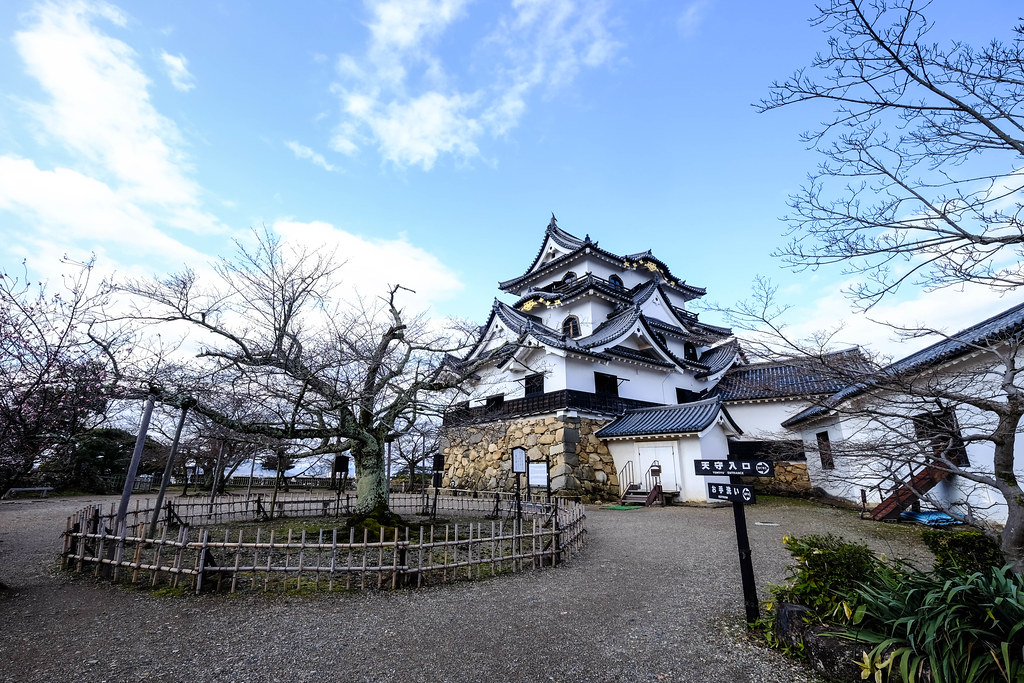

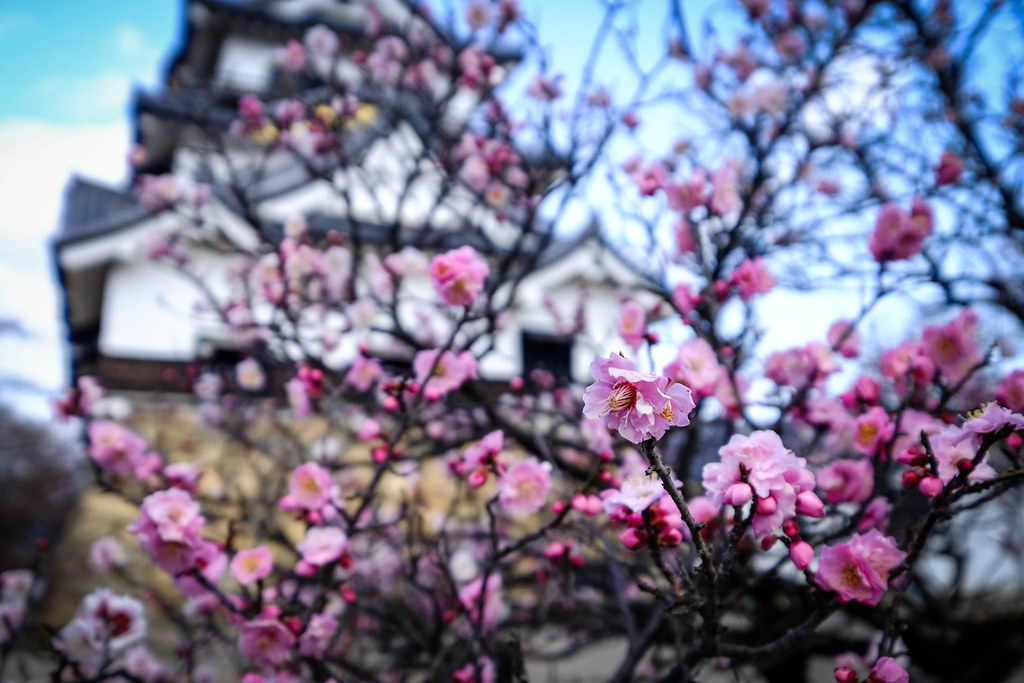
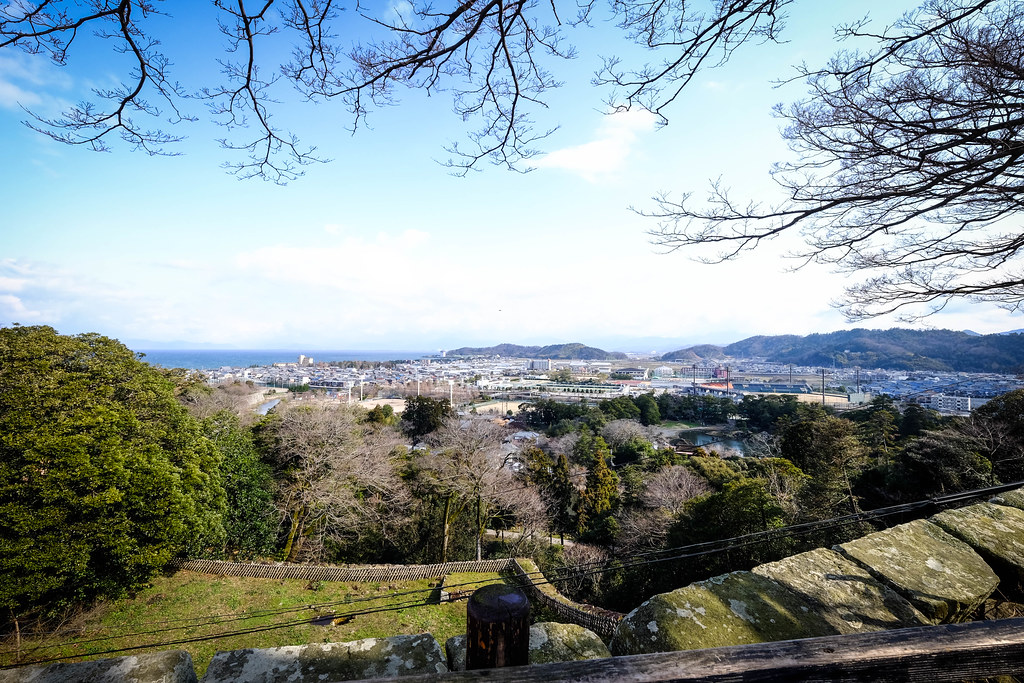
We started the trip with a visit to Hikone Castle which was built in the Edo period (1603-1868). It’s spring time and we get to see ume blossoms! Appointed as a national treasure in 1952, the castle tower rises on a solid stone wall and surrounded by double moats. Considered as one of eight beautiful spots of Lake Biwa, the building shows a harmony of beautifully curved lines. Lake Biwa is Japan’s largest lake. It supports an abundance of life and industry across a wide area.
Hikone Castle
Address: 1-1 Konkicho, Hikone, Shiga Prefecture 522-0061, Japan
Samegai Trout Farm
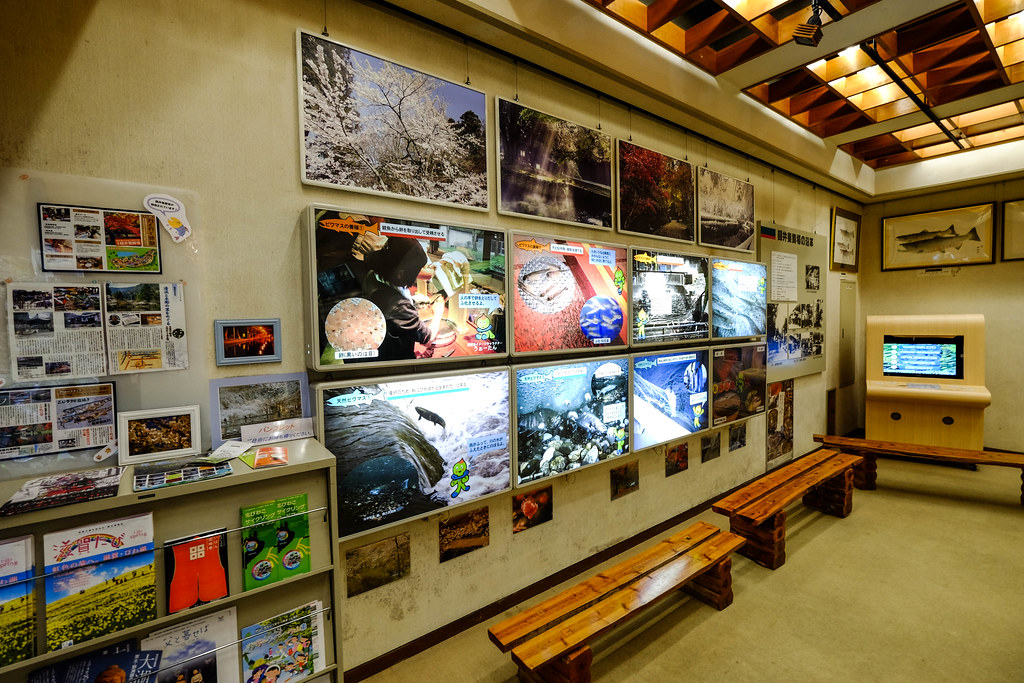
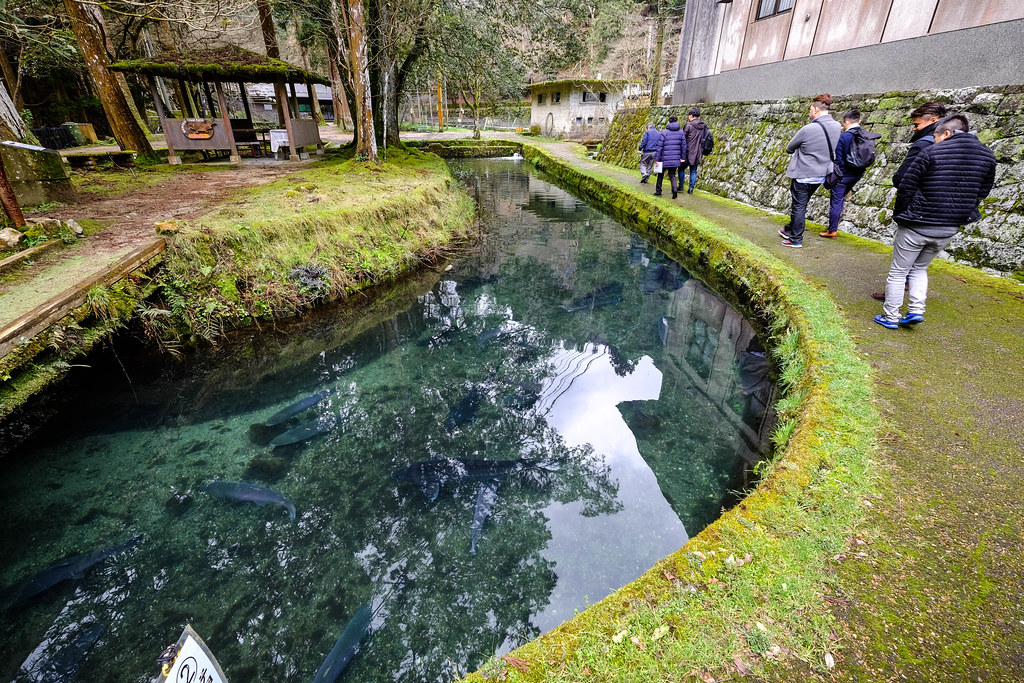
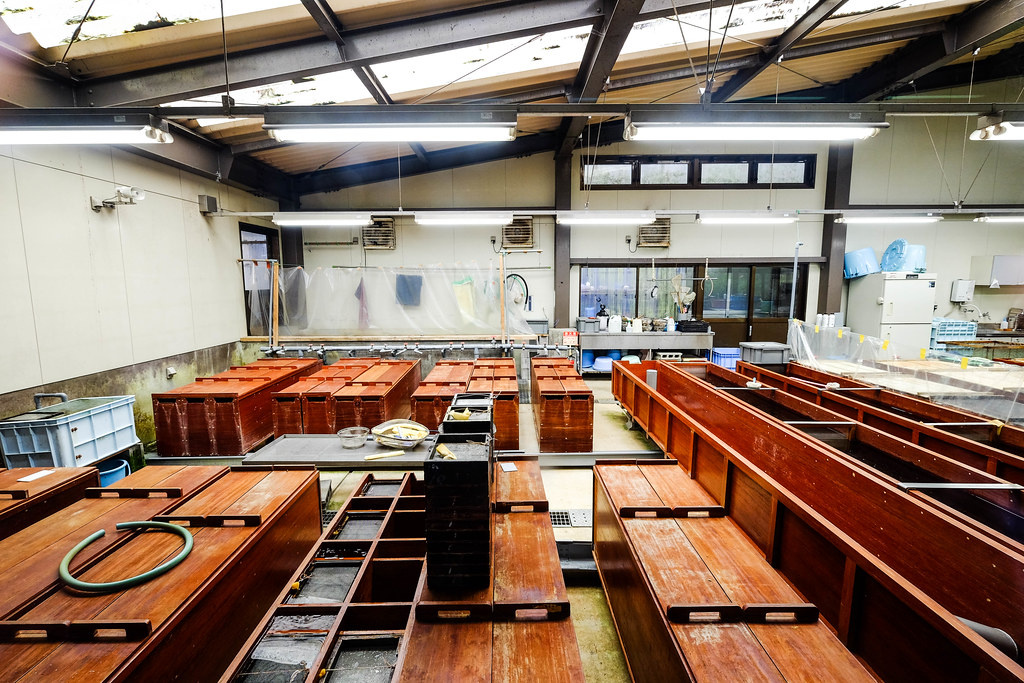
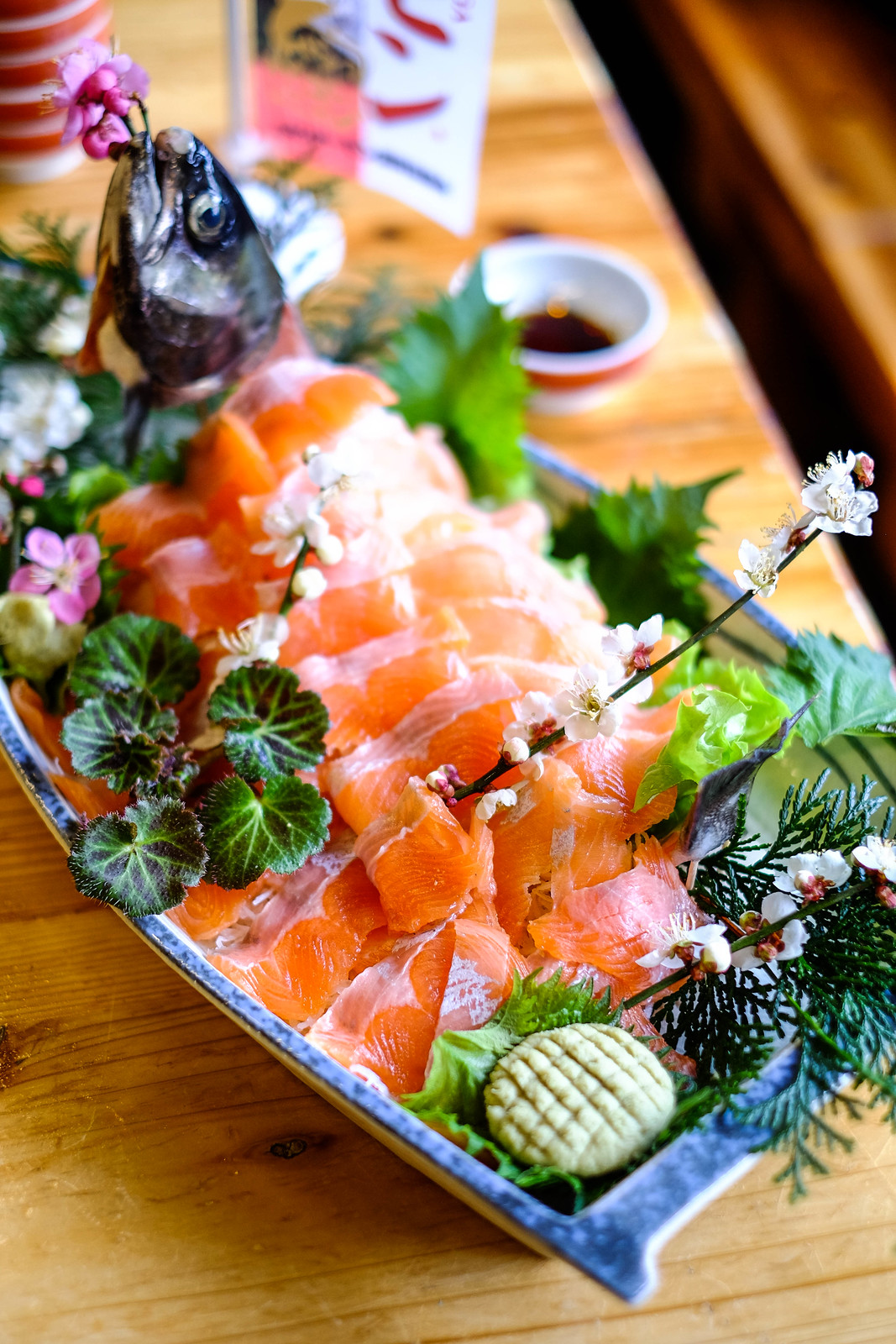
Are you a fan of salmon? At Samegai Trout Farm, the oldest birthplace of trout cultivation in Japan, they are known for breeding Biwa salmon which is endemic to Lake Biwa. These fishes grow up in Lake Biwa for 3 to 5 years and lay eggs. The hatched fry grow up in a river before going down to Lake Biwa. In March, they have released 70,000 baby trouts to Lake Biwa.
Do you know, the size of a Biwa salmon can grow up to 60 to 70cm. For them to fertilize, trouts likes cold water so 10 degree celsius is good, which makes this place good for farming trout. We watched a video to understand more about the works of Samegai Trout Farm before taking a walk around the farm. At the end of the tour, it’s time to taste the tasty Biwa Salmon.
Chef Jeremy: “Trout looks like salmon but it has finer grain and the taste is not as strong but very sweet. For people who are trying sashimi for the first time, they will enjoy this dish. I like the oiliness from the meat.”
Samegai Trout Farm
Address: Kaminyu, Maibara-shi, Shiga 521-0033, Japan
Phone: +81-749-54-0301 (Weekdays)
Website: http://samegai.siga.jp/
Lakeside Ryokan Futabaso
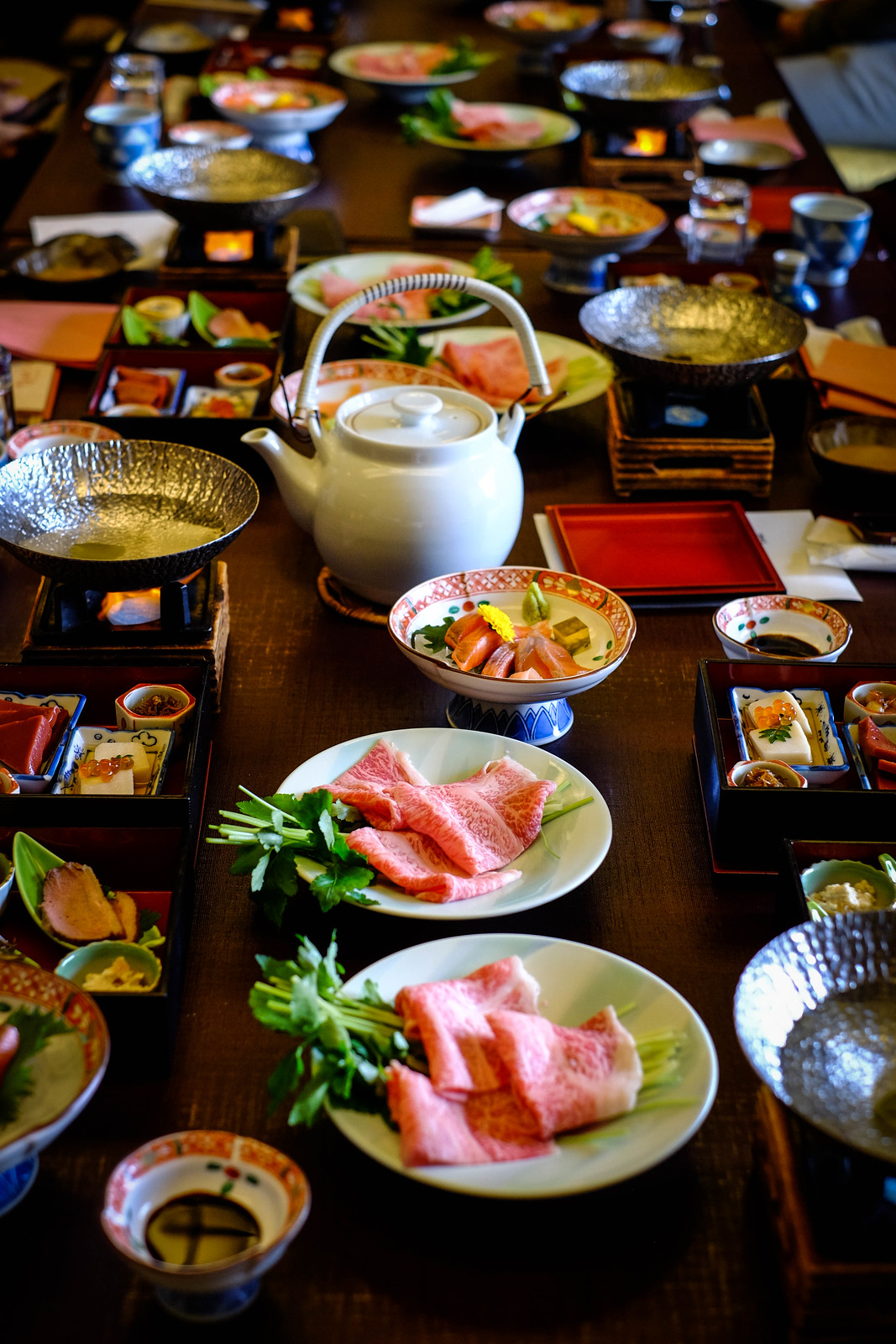
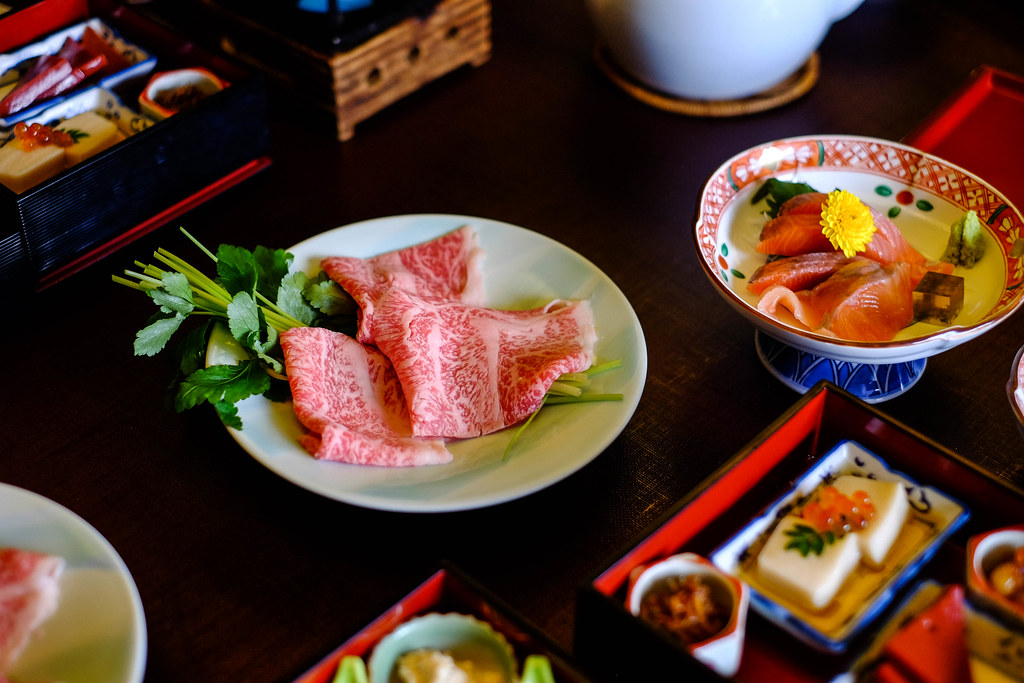
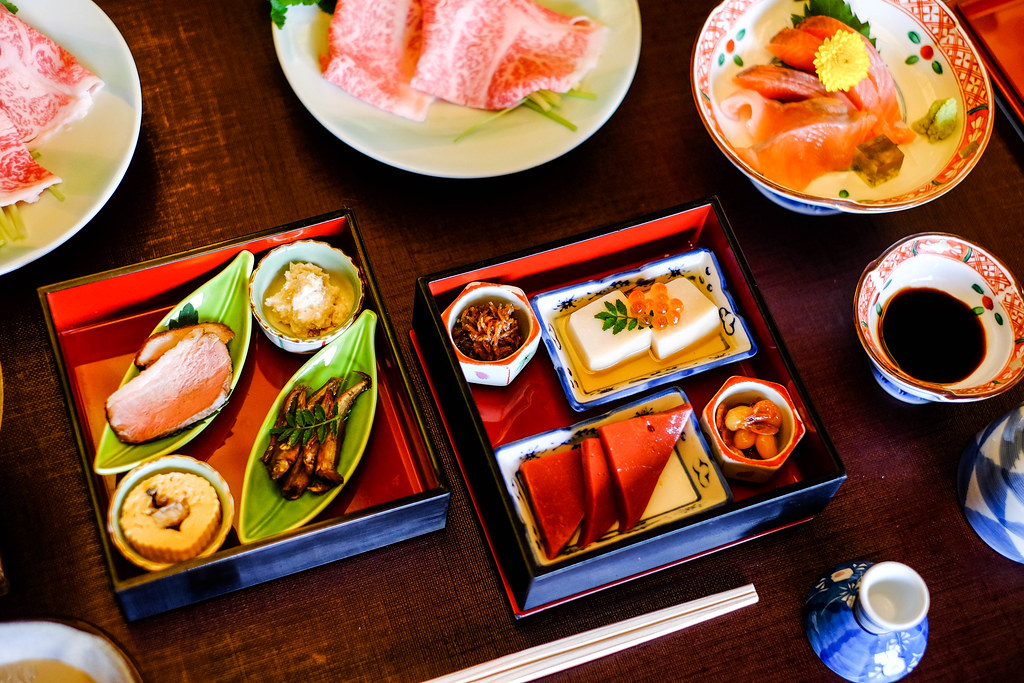
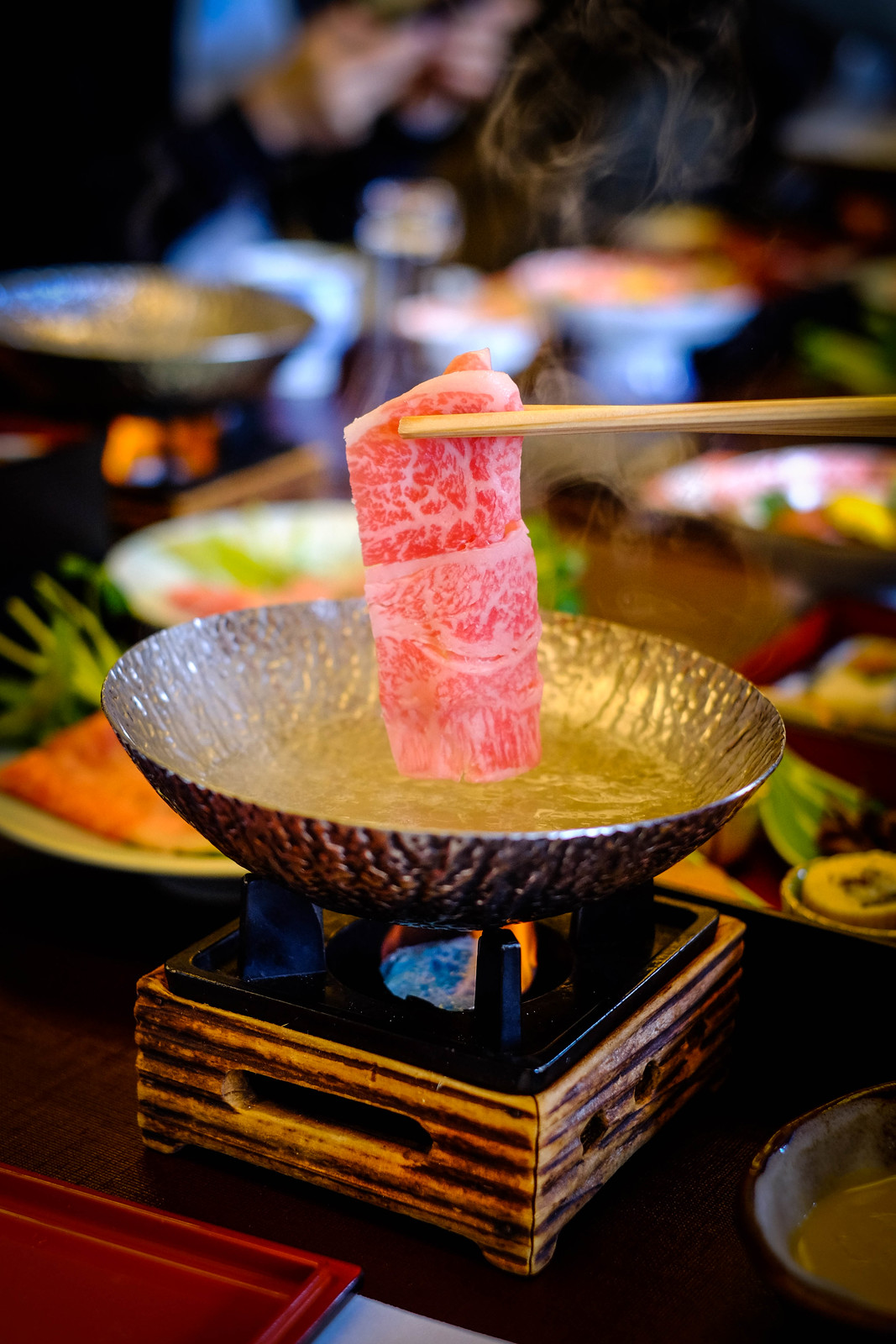
Located along Lake Biwa and 8 minutes drive from Hikone Castle, Lakeside Ryokan Futabaso (滋賀県彦根市の旅館) is a traditional Japanese-style inn with the lake view. We didn’t stay here but came specially for their kaiseki meal served in a traditional setting.
Chef Jeremy: “I always enjoy Kaiseki because the meal format follows a strict order. This restaurant is just in front of the beautiful lake, I am really thankful for the meal at this place and the products are so beautiful as well.”
Featuring 8 treasures from the lake, we had sesame tofu, plum agar with tofu dressing, beans with shrimps, red konyaku, roast duck, freshwater goby, ayu and eel wrapped in omelette. Special mention is ayu (or sweetfish) that is common in rivers throughout Japan. Since they have a distinct aroma, they are also called Kogyo (‘aromatic fish’). Ayu from Lake Biwa is known for its great taste.
Omi Rice and biwa trout are also served alongside with the dishes. The highlight of our lunch (in fact for all our meals) is the certified Omi Beef done in shabu shabu style. Omi Beef is one of Japan’s three premium types of wagyu and this type of black-haired cattle has the longest history in Japan of being produced for food. I will share more about its production in the later paragraphs.
The beef slices here are so tender with very high fat content. I learnt from Chef Jeremy that that the fattier the meat, the longer you have to cook it so as to render the fats. It’s so true, these beef slices tasted so much better when the fats are rendered.
Lakeside Ryokan Futabaso is a 10-minute drive from JR Hikone Station and JR Maibara Shinkansen (bullet train) Station, and free pick-up shuttles can be arranged. JR Kyoto Station can be reached within a 50-minute train ride.
Lakeside Ryokan Futabaso
Address: 1377 Matsubara-cho, Hikone-shi, Shiga prefecture
Phone: +81-749-22-2667
Harie Spring Water Village
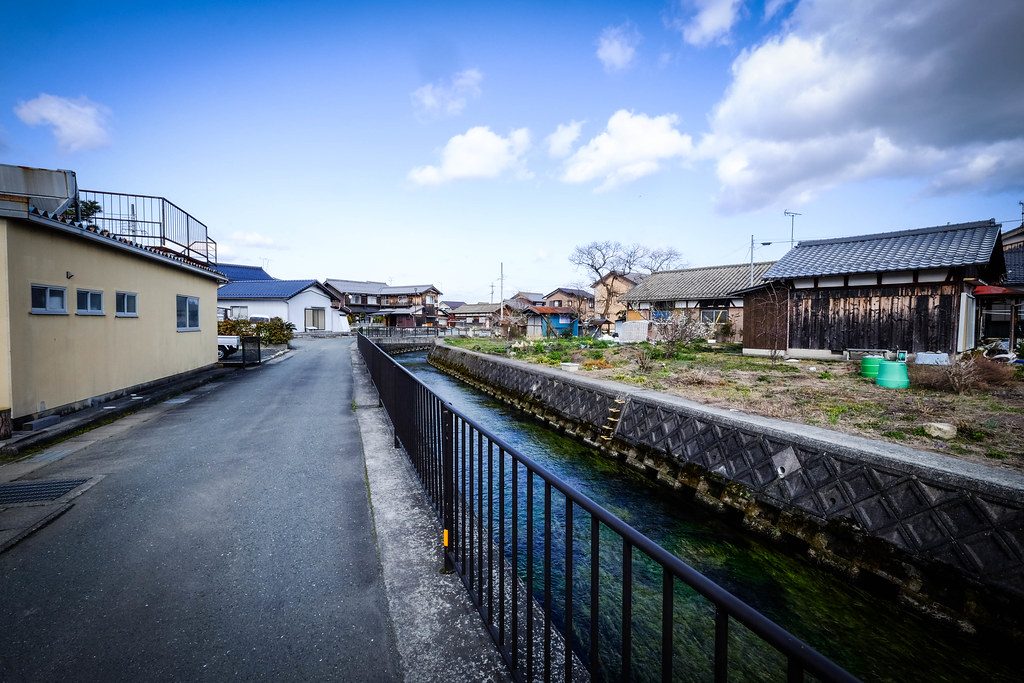
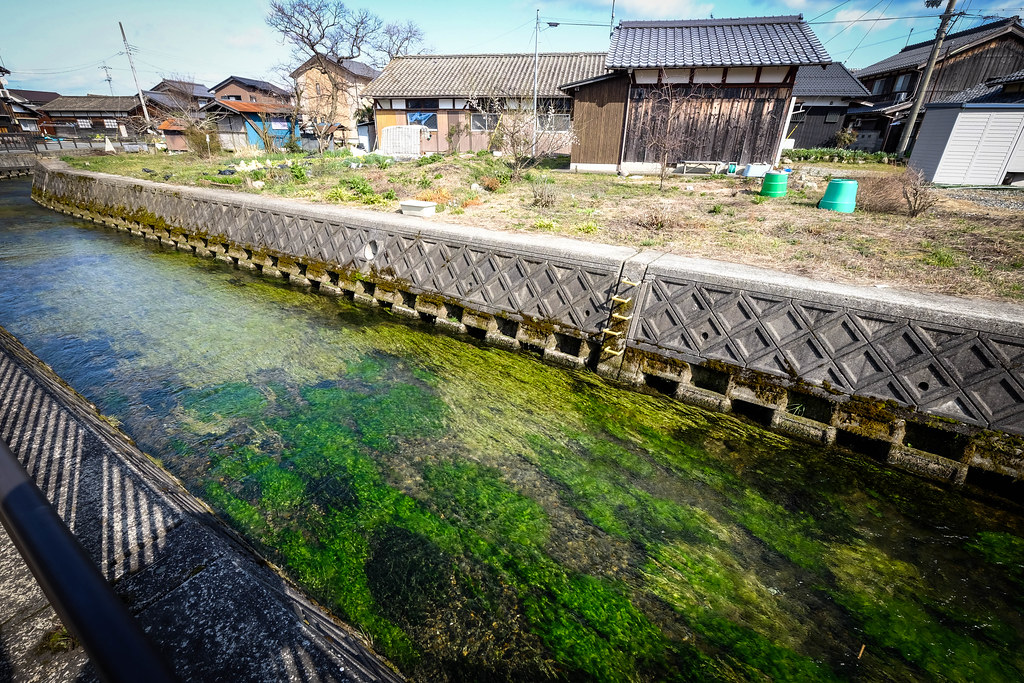
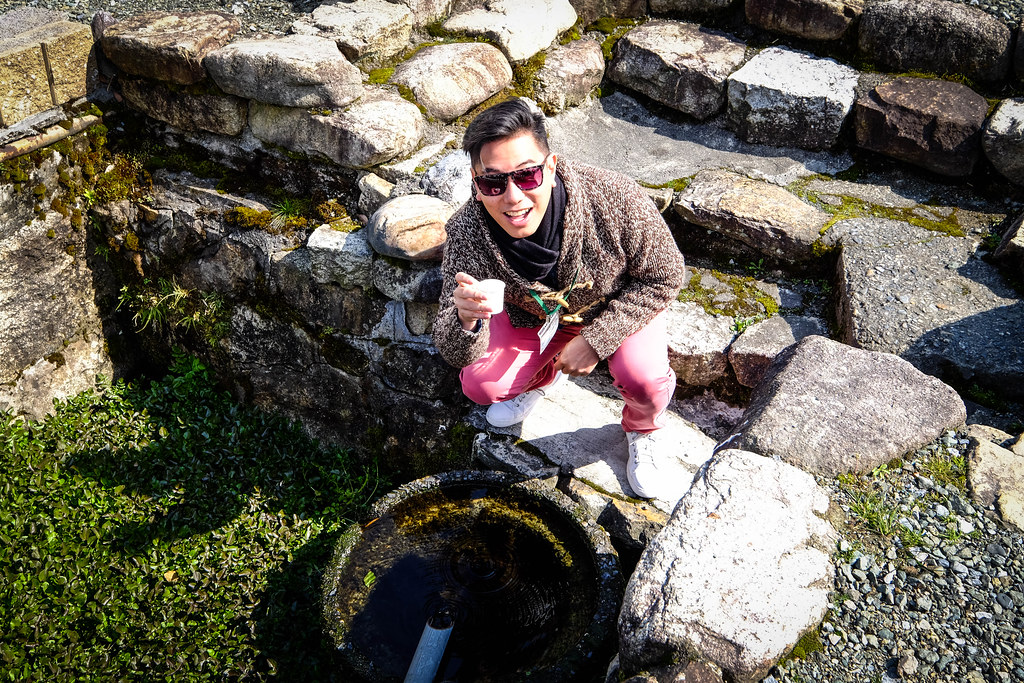

People have long relied on water to thrive. One example is the Harie Spring Water Village. This small village is noted for their unique lifestyle. Each home has its own crystal-clear water spring called “kabata” which is used as both well and kitchen sink. The entire system is self-sustaining and a perfect synergy of man and nature. We had a neighbourhood walking tour conducted by villagers to see kabata in private homes. It’s my first time seeing such a modest way to use this important resource
As mentioned previously, fish caught in Lake Biwa is a mainstay of people’s diet. Besides biwa salmon, we also tried Funa-zushi, a fermented funa (freshwater carp) made from fish caught in the spawning season. I can only say, it’s an acquired taste.
Harie Spring Water Village
Address: Harie, Shin-asahi Town, Takashima City, Shiga Prefecture, Japan
Website: http://harie-syozu.jp
Kawashima Sake Brewery
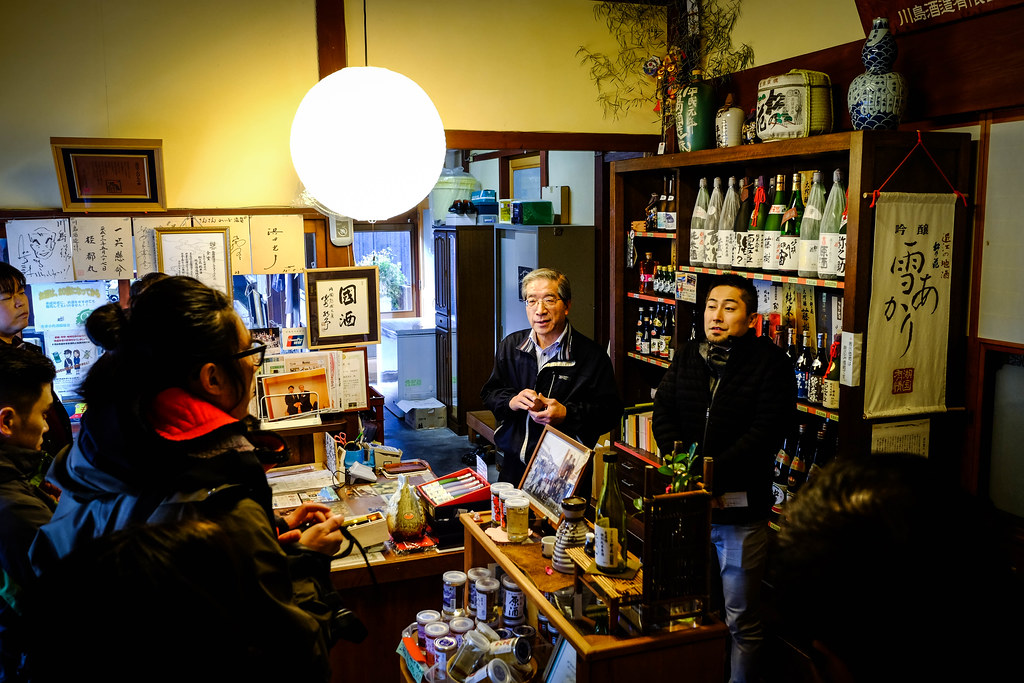
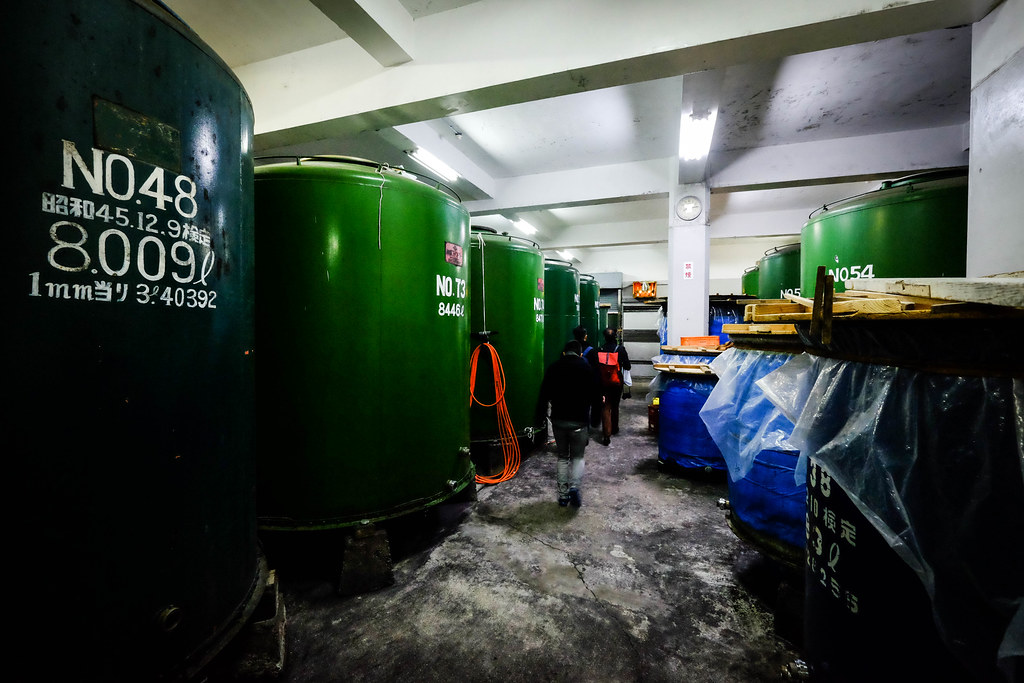
Located adjacent to the Harie district, we made our way to a 150-year-old sake brewery, Kawashima Shuzo. They manufacture sake ‘matsu no hana’ and ‘touju’. We went behind the scenes and learn from the brewers how they make award-winning sake using locally-grown rice and pure spring water. After seeing the brewery, sake tasting waits for you!
Kawashima Sake Brewery
Address: 83 Asahi, Shin-asahi-cho, Takashima City, Shiga (〒520-1501 滋賀県高島市 新旭町旭83)
Phone: +81-740-25-2202
Website: http://www.matsu87.jp/
Okaki Honten
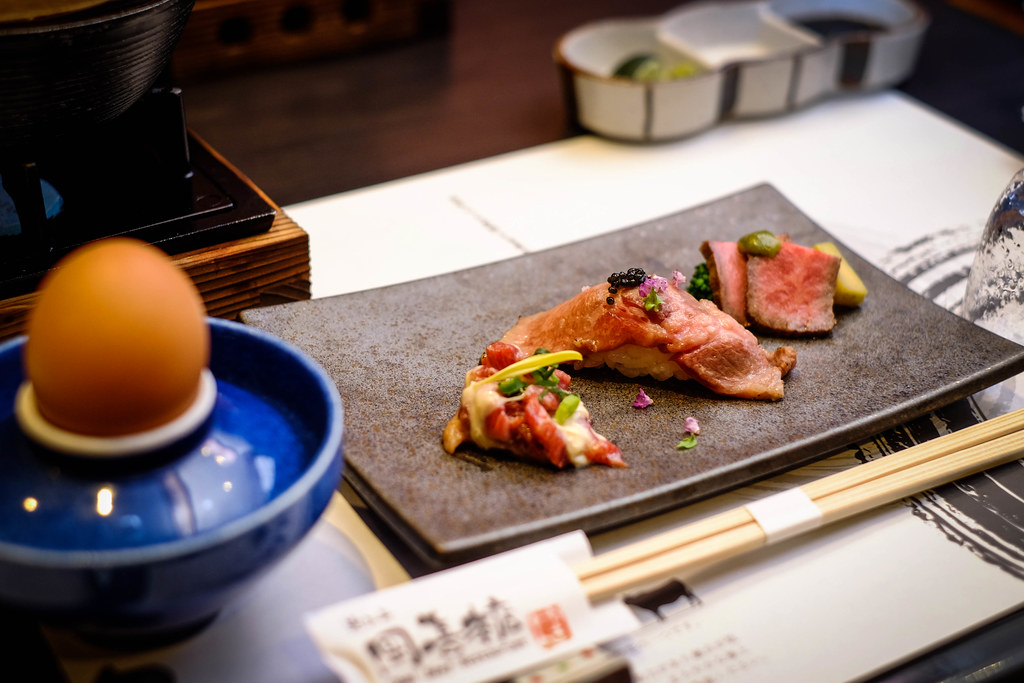
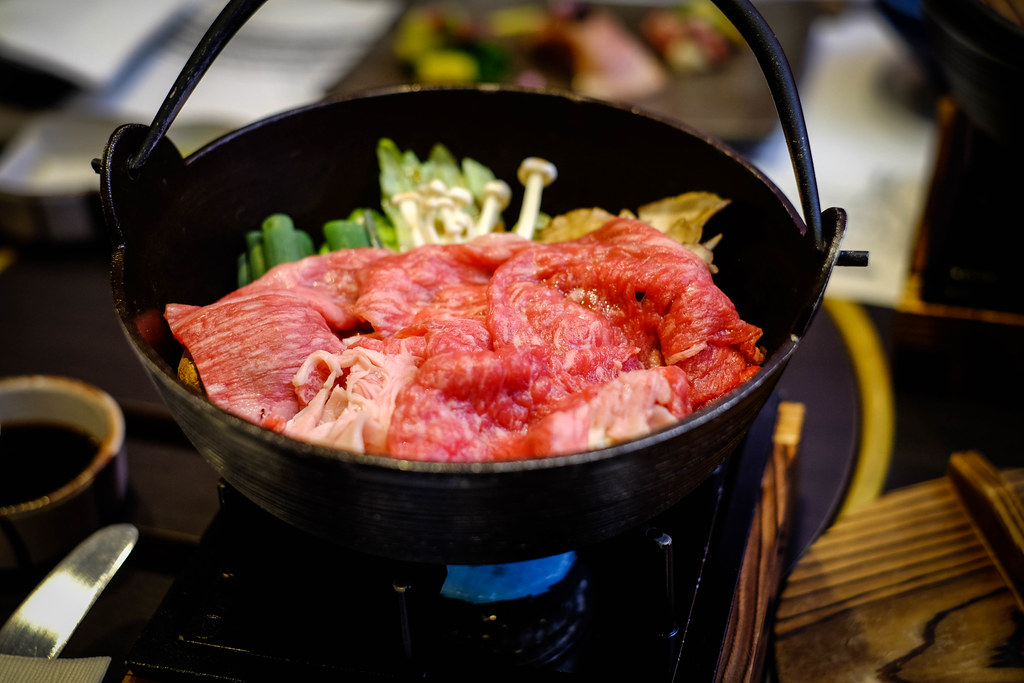
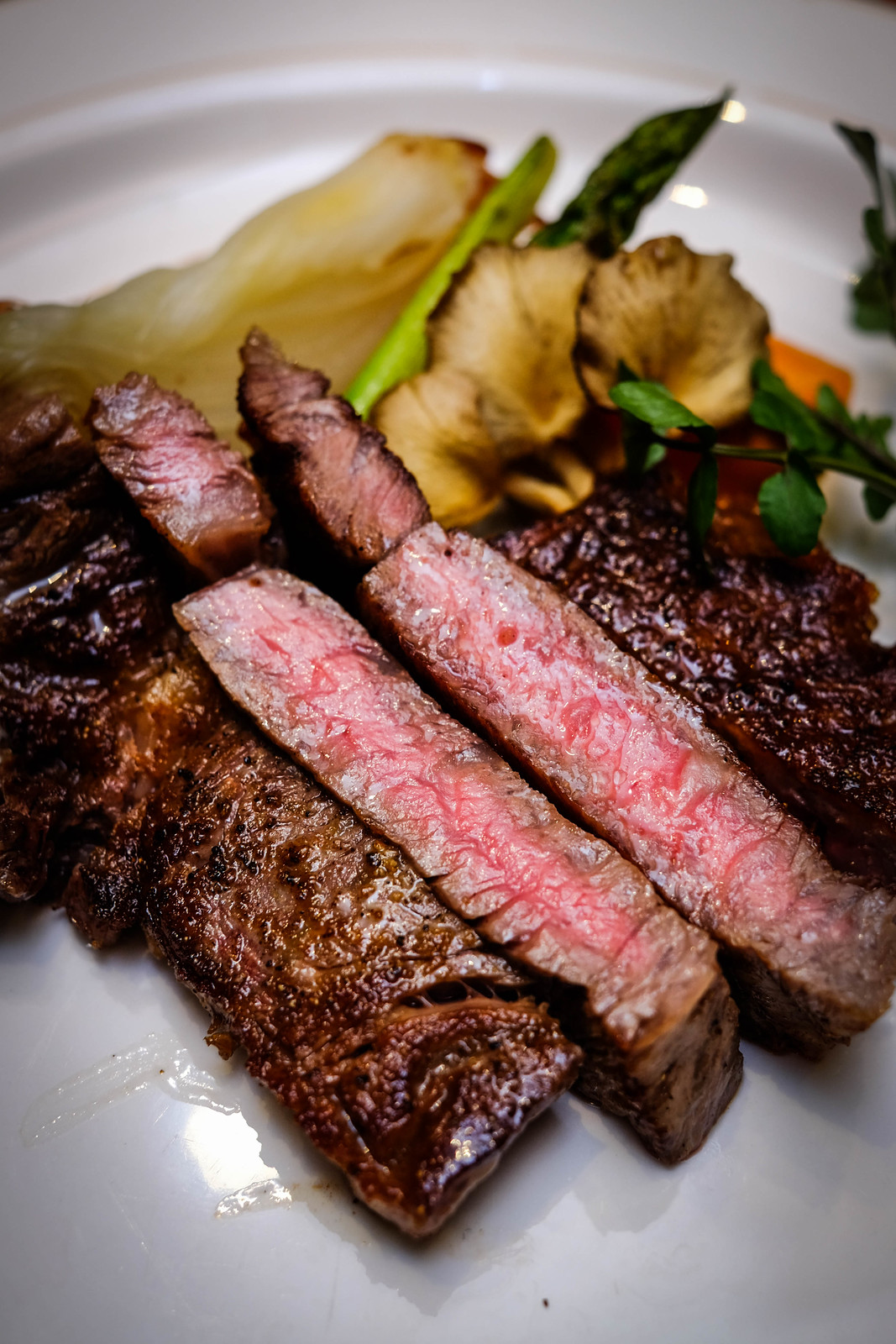
Talking about Wagyu beef, you should be familiar with the three king that rules Japan Wagyu – Matsusaka, Kobe and Omi. Omi Wagyu raised in Shiga Prefecture. The cattle are raised with extreme care in an environment surrounded by bountiful nature and water.
We arrived at Okaki Honten for dinner where we were treated to everything omi – omi beef sushi, omi beef sukiyaki and omi steak and found it very, very good, even though I prefer my meat lean!
Chef Jeremy: “There is no better method for omi beef rather than grill and sukiyaki.”
Okaki’s Omi beef features soft texture and outstanding flavour. In addition to having a very fine meat grain, the meat is very smooth in texture. You do not taste or feel the fat when you chew; it’s very flavourful. Especially for the sukiyaki, the beef melts in your mouth as its refreshingly wonderful taste bathes your tongue.
The finale was the beautifully marbled steak you see above. You think this portion isn’t too much for one, but you have to think of this as foie gras. You can’t eat a lot of it as it’s too rich. But delicious it was – nicely seared on the surface, yet revealing the pink meat in the middle.
Okaki Honten
Address: 5294 Yamanoue, Ryūō-chō, Gamou-gun, Shiga-ken 520-2531, Japan (滋賀県蒲生郡竜王町山之上5294番地)
Phone: +81-748-57-0568
Okaki Ranch
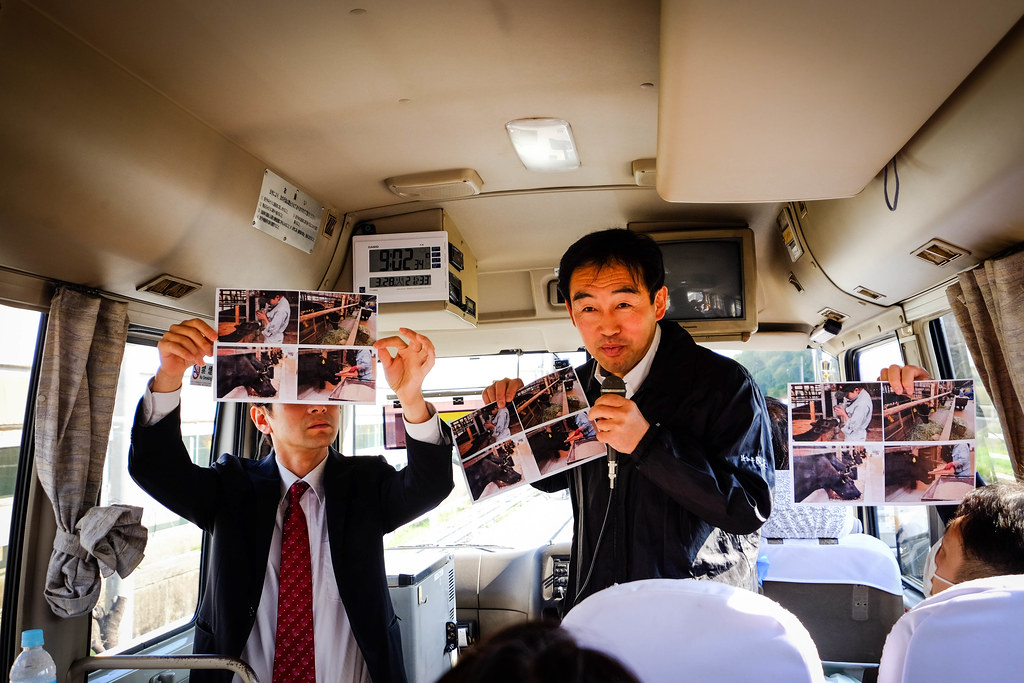
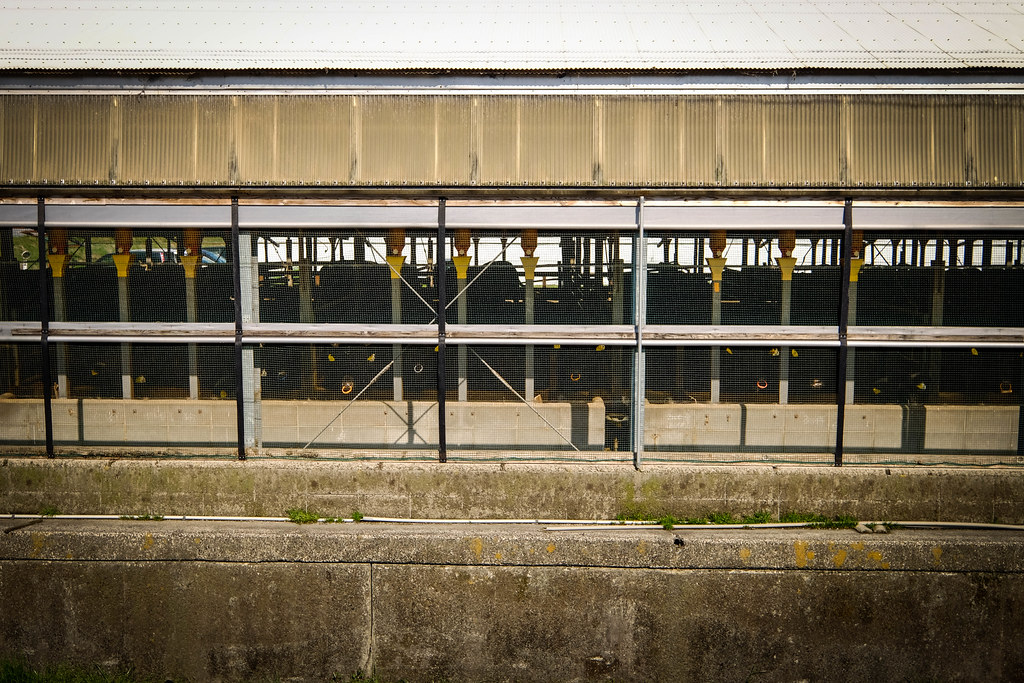
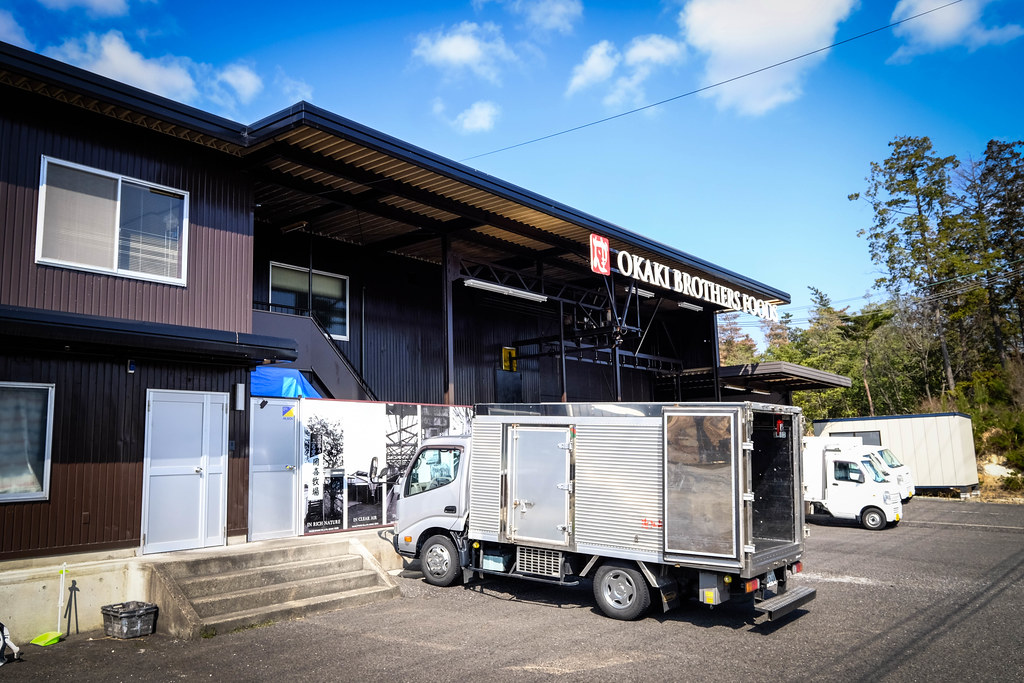
The day after we had our scrumptious spread of Omi beef, we visited Okaki Ranch to see the production. Okaki was Founded in Yamanoue, Ryuo town in Gamo County, the heart of Shiga Prefecture, which was called “Omi” in old days. It is blessed with clear air, bountiful tasty water from the Hino River, and a wealth of herbs grown since ancient times in the surrounding countryside.
Cattle farmers follow government guidelines and raise their cattle with tender loving care. They pay special attention to the hygiene and feed, making sure that they raise the cattle in healthy and comfortable environment. This is because keeping them from feeling stress gives the beef a tender quality.
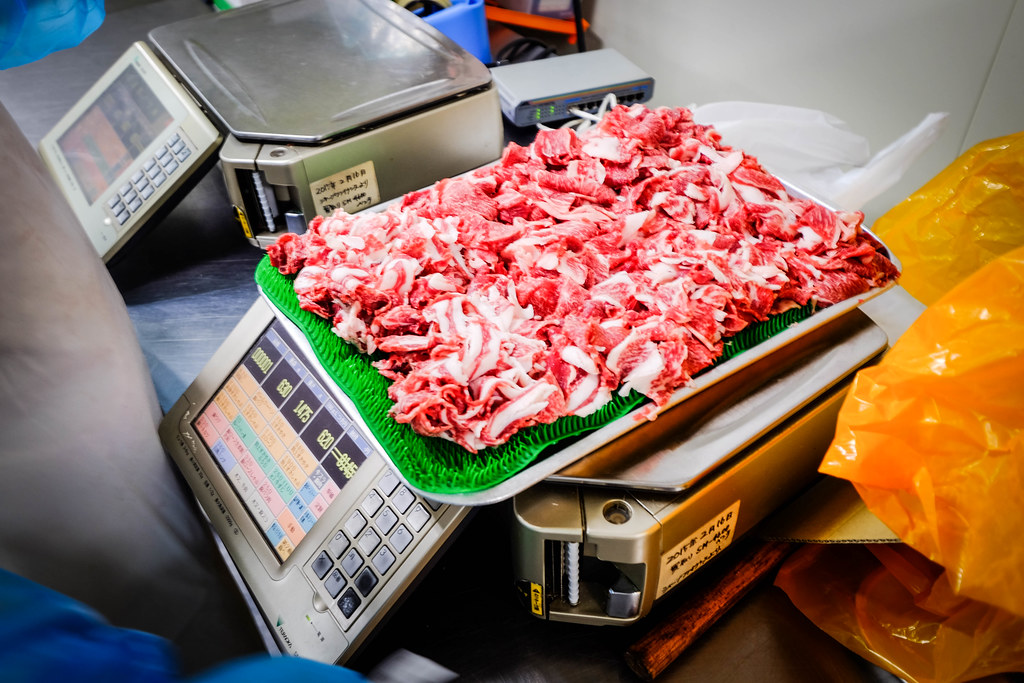

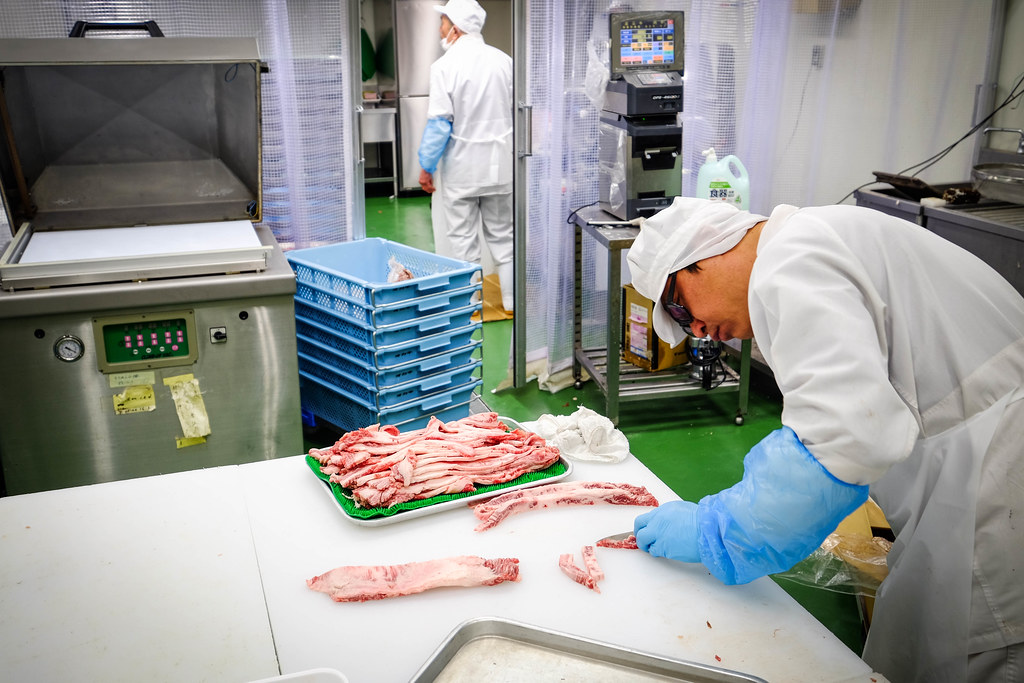
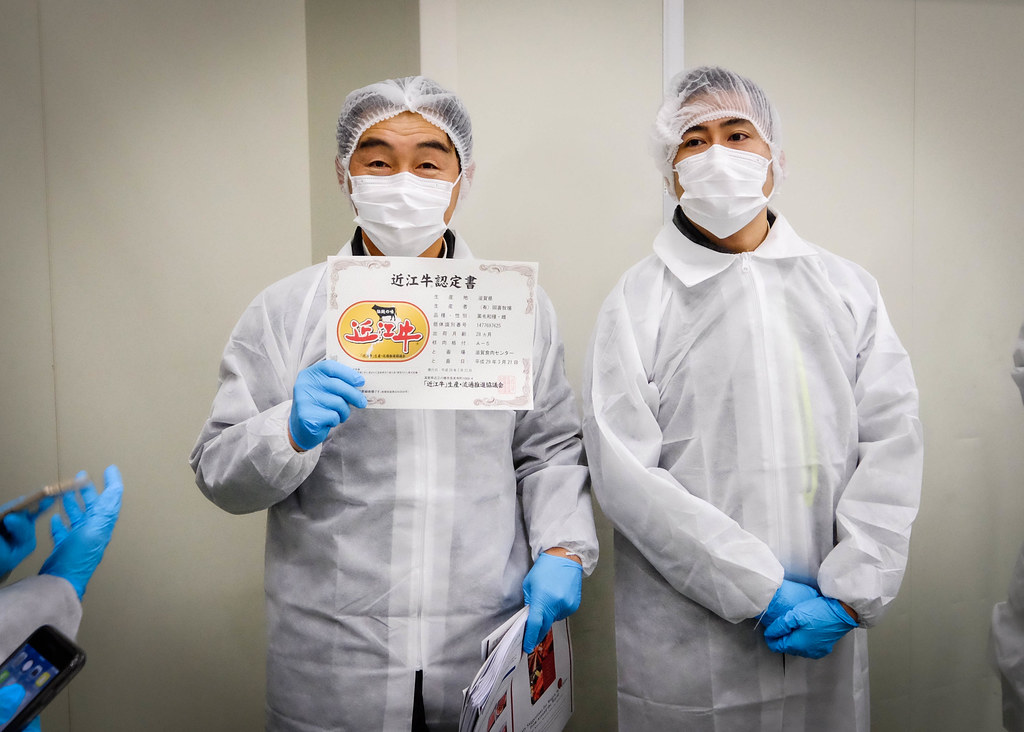
After putting on our hygiene gears, we entered to a cold room to see his works slicing the thickly marbled meat. While markets focus on appearance in ranking beef, Okaki places a priority on the quality that goes into production, such as the feed and water that improve the taste of Omi beef.

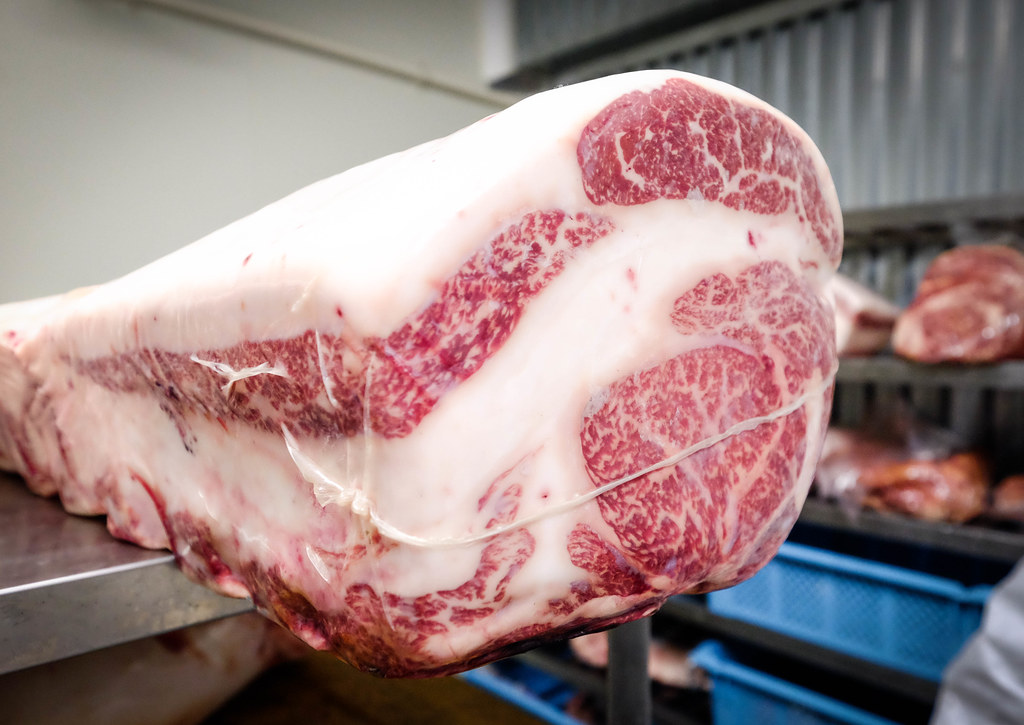
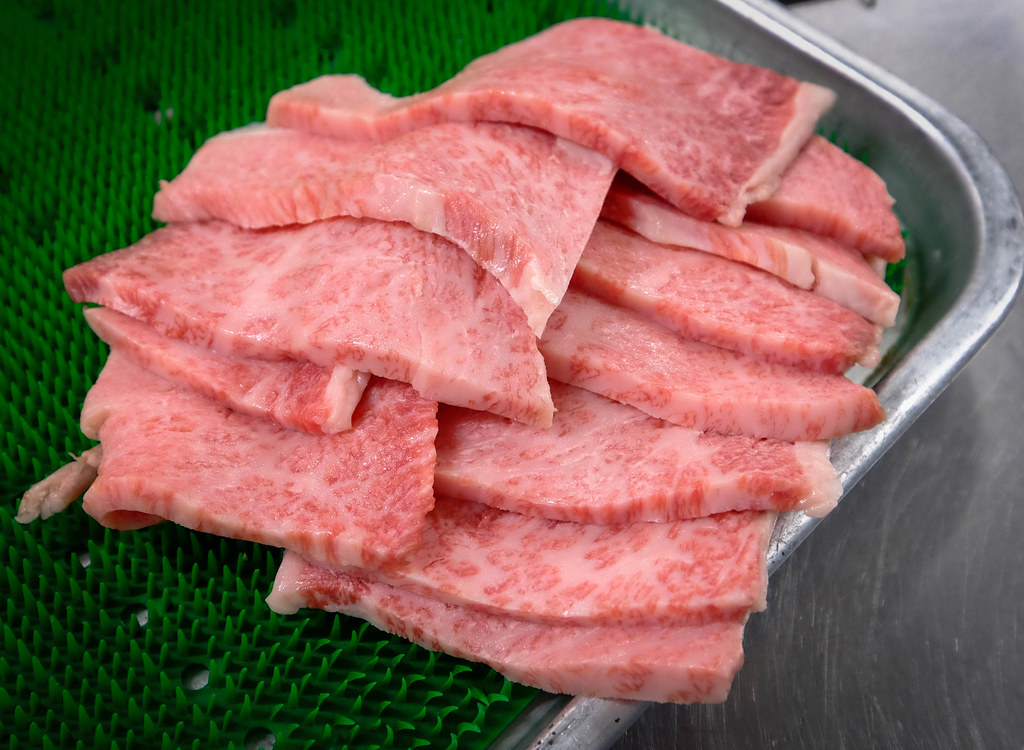
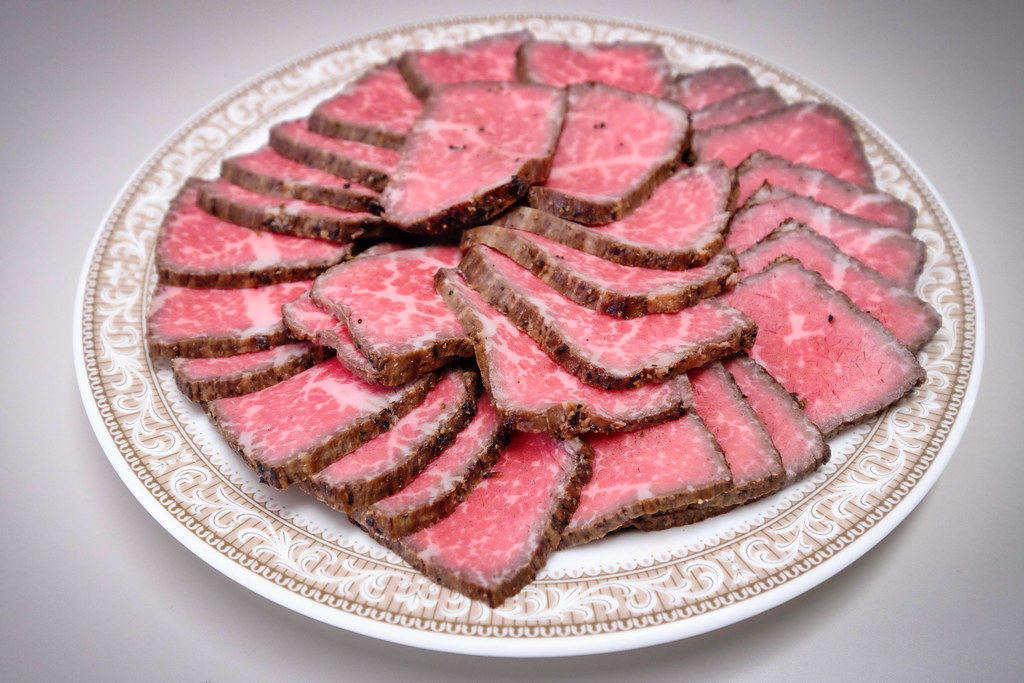
They take special consideration of health conditions when selecting their feed, grazing them on high-grade sweet corn and wheat. The cattle spend their days pleasantly in spacious ranches abundant in clean water and fresh air. This enthusiasm for top quality is the force behind Okaki’s drive to perfect its production techniques and deliver tasty Omi beef to your table.
Chef Jeremy: “I am surprised when I came here. Everything is sliced by hand with no machines at all. This is an example how serious Japanese are with regards to the products by taking care of the cattle and community. That’s why so many people trust Japanese products. Omi beef taste is different, it can be lean and rich at the same time, it can be intense but the feeling is light. I am honoured to be here.”
Koka Ninja Village
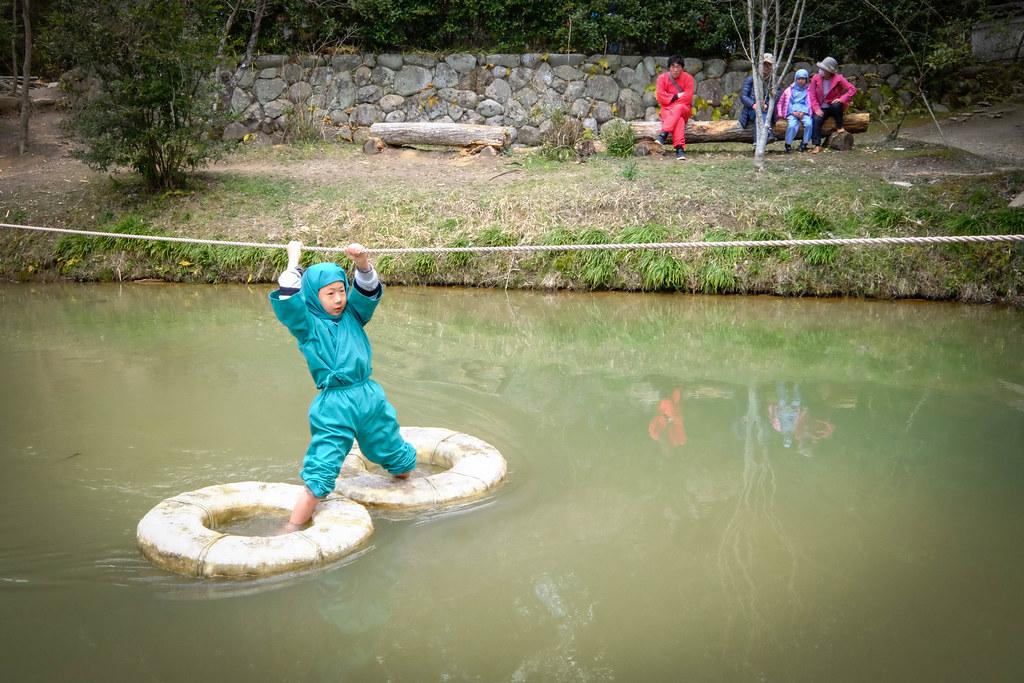
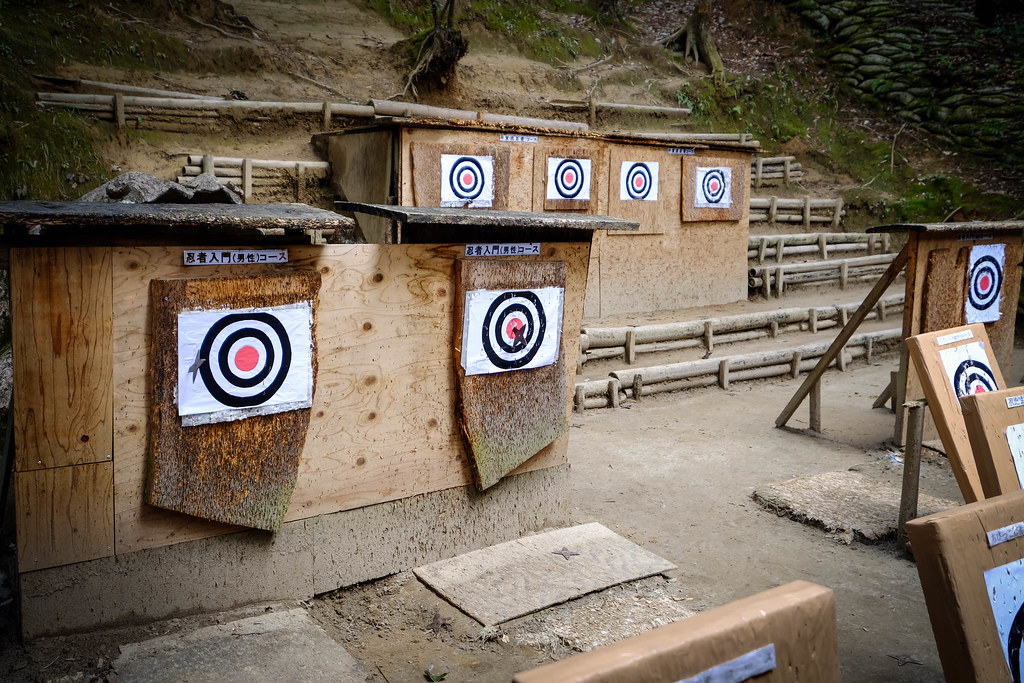
Ninja is the speciality of Japan which is admired by many children around the world. If you (or your child) wants to be a ninja, you can get some training at Koka Ninja Village! You will find a museum dedicated to ninja techniques, a house full of ninja traps and secret panels, “water spider” water crossing devices and a shuriken throwing star dojo. Experience the secret world of the fabled ninja for yourself!
Koka Ninja Village
Address: 394 Oki, Koka-cho, Koka City, Shiga
Phone: +81-748-88-5000
Website: http://koka.ninpou.jp/
Michikusa Ryouri Obana
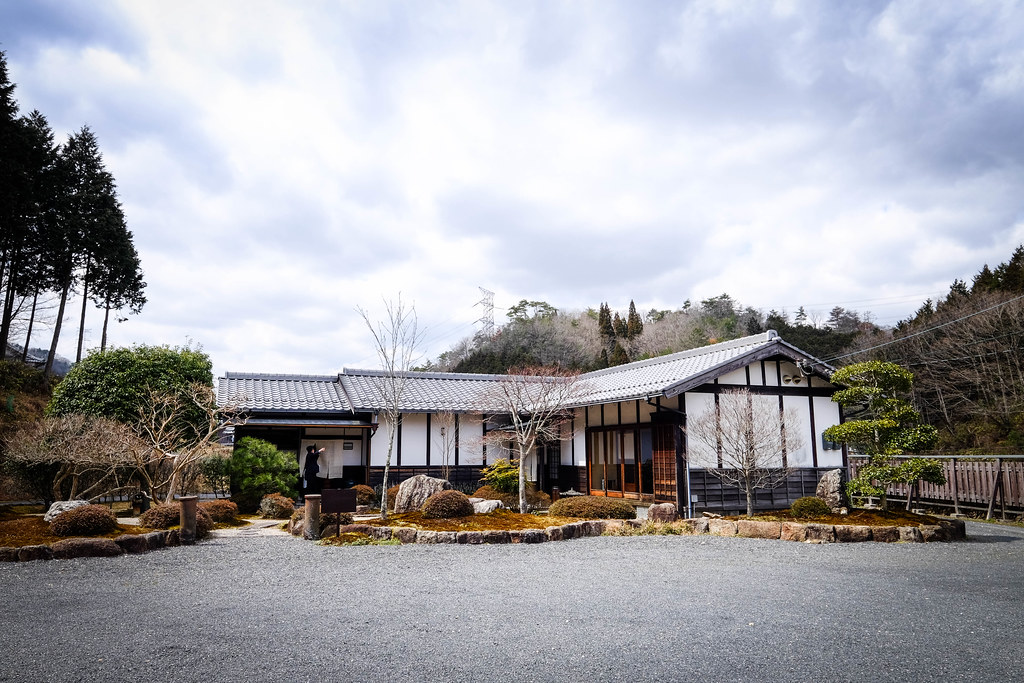

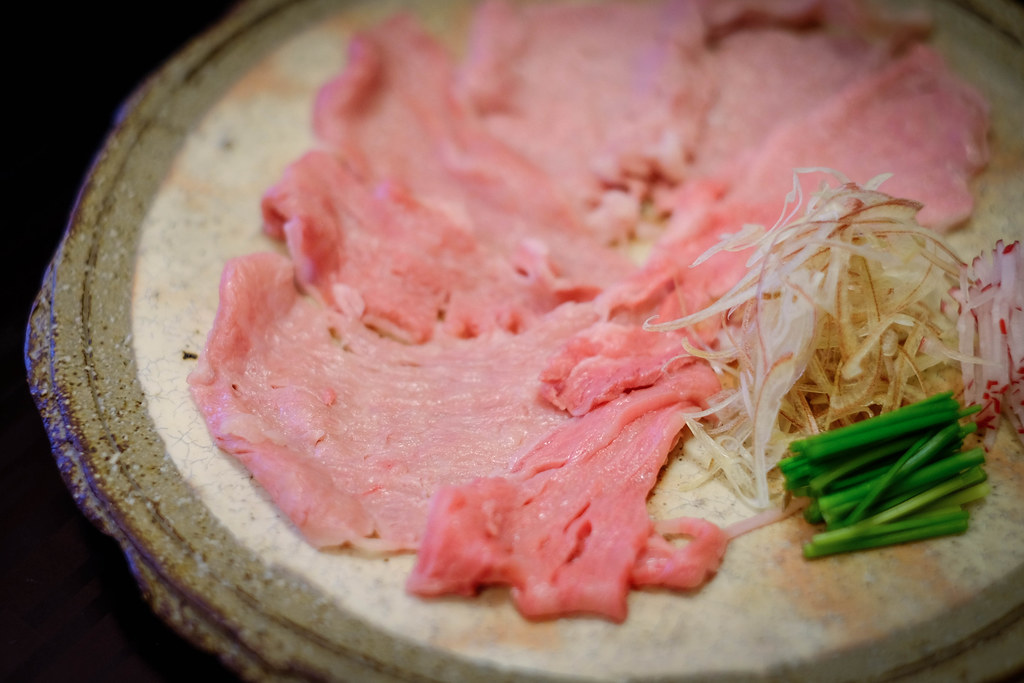
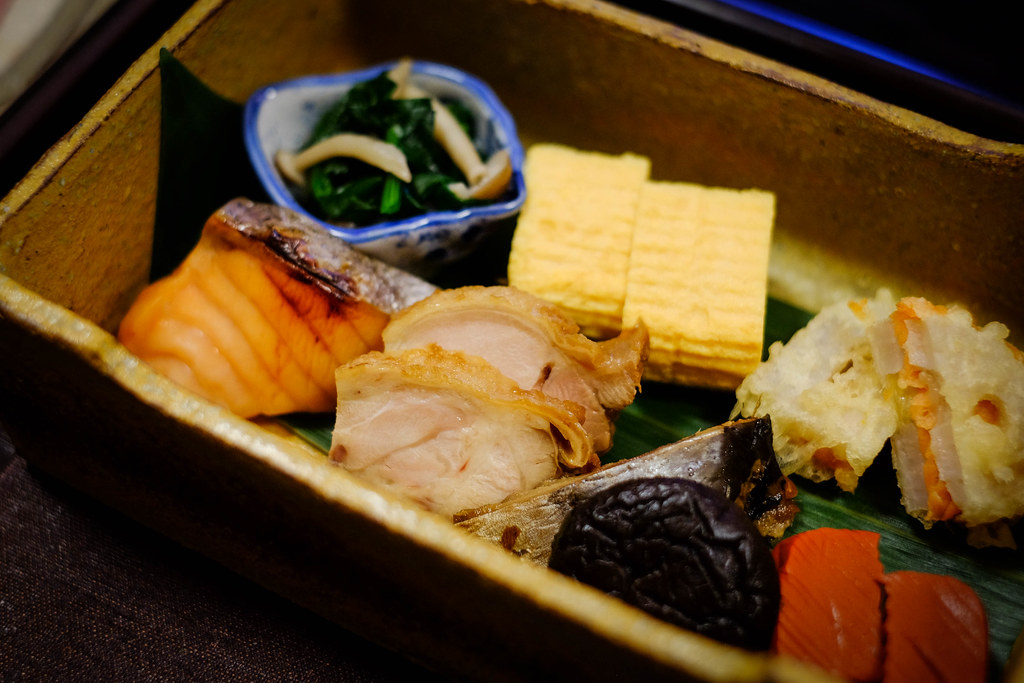
While I was happy with all my meals, Michikusa Ryouri Obana is the highlight of this trip. We enjoyed authentic Japanese cuisine cooked by a skilful chef who was trained at the famous restaurant called ‘KIKUNOI’. Serving his dishes with Shigaraki ceramics, cooks everything to perfection, bringing out the flavours of the dishes to the fullest
In the box, there was dashi maki eggs, spinach, Deep-fried stuffed lotus root with smoked salmon, grilled mirin style seasoning salmon, chicken, nishin (herring fish), shiitake mushroom and red konyaku. The vegetables were light and crunchy with minimal seasoning, you can really taste the spring in the vegetables. The beef was cooked between 65 to 75 degree celsius which brings out the best flavour. The dishes are prepared in Shigaraki ceramics which is total in total harmony.
Chef Jeremy: “We had a really good lunch. It was a nice respite and the portion was just nice. The chef was being sensitive – he considered the portion, the season and even the plates he used. The highlight was Omi beef where he cooked it at a lower temperature so the fat will melt. Everything the chef did was to give the best to the ingredients.”
Michikusa Ryouri Obana
Address: 1078 Shigarakicho Koyama Koka Shiga
Shigaraki Ceramic Cultural Park
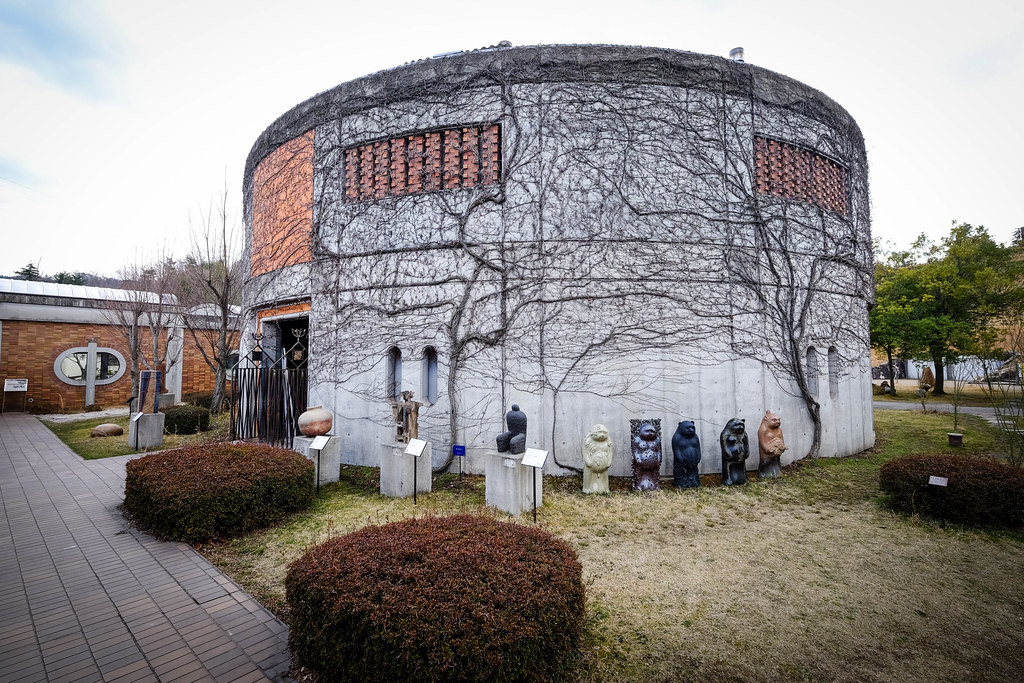
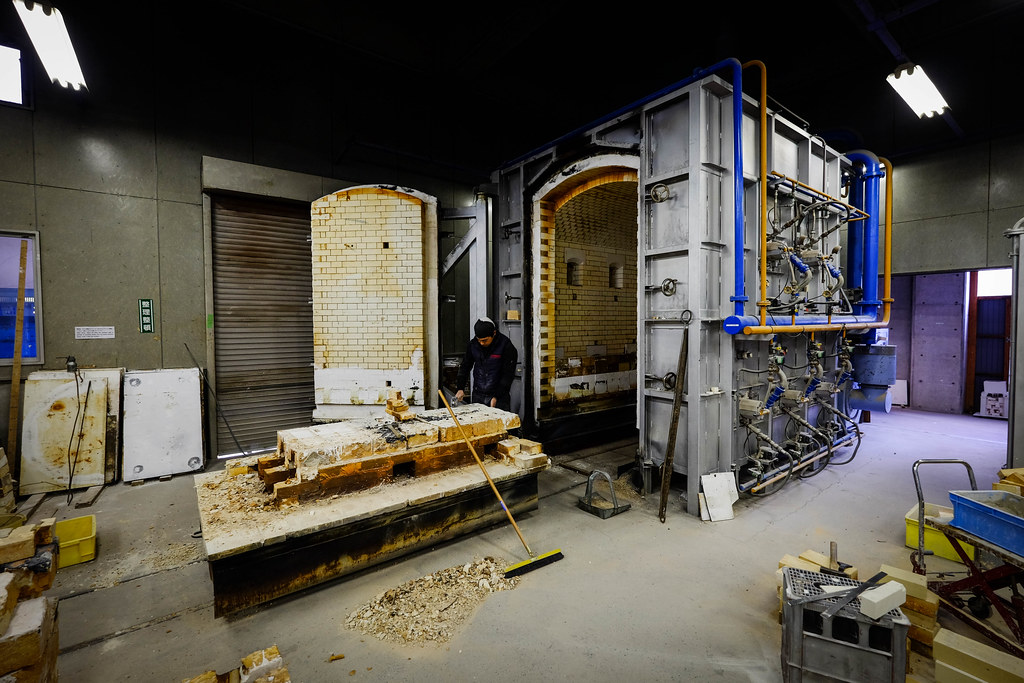
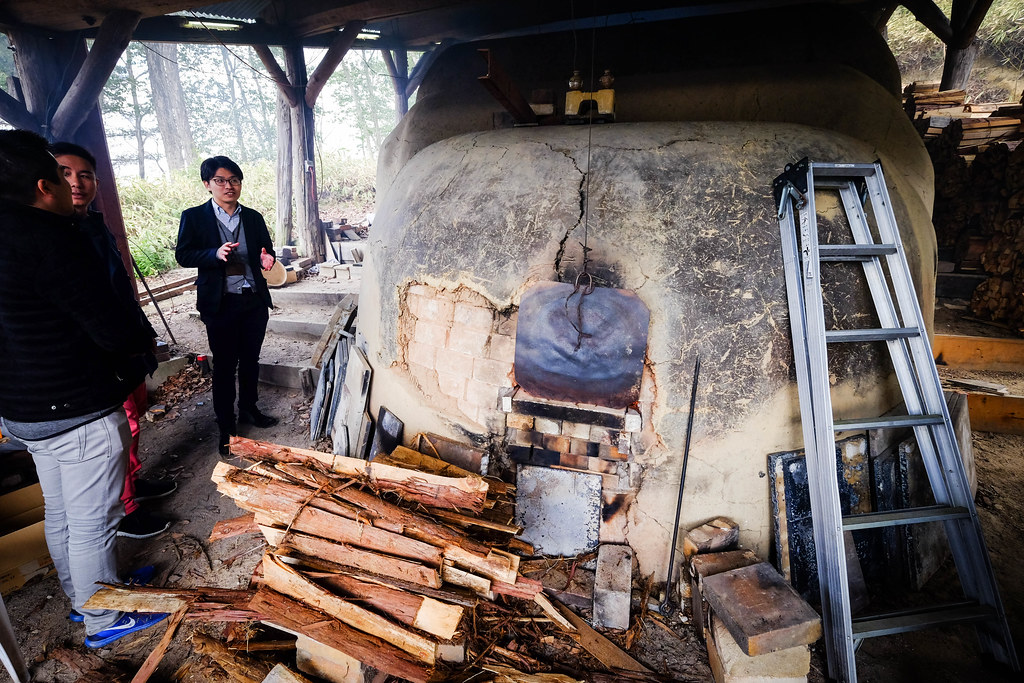
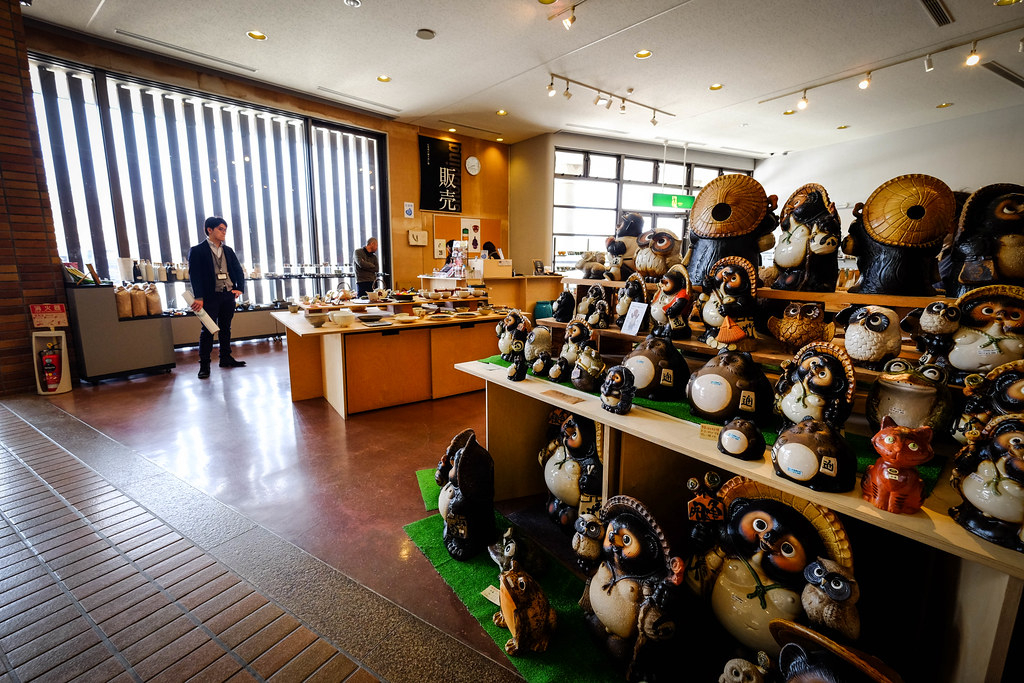
Our trip concluded at Shigaraki Ceramic Cultural Park where we did some shopping and bought a Shigaraki bowl. This part is intended to support various activities around the theme of ceramics, including artistic creation, training, and exhibitions. They even have “Artist in Residence Program” that allows artists from across Japan and overseas to stay here and produce works of art.
Shigaraki Ceramic Cultural Park
Address: 2188-7 Chokushi, Shigaraki-cho, Koka City, Shiga
Phone: +81-748-83-0909
Website: http://www.sccp.jp/e/



